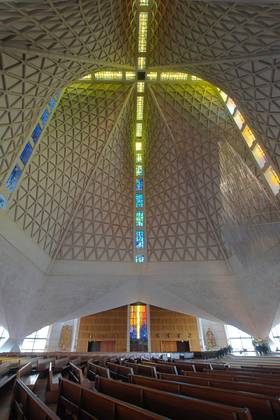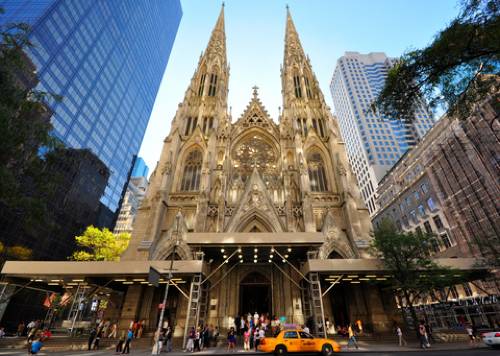
What Pope Benedict XVI has called a “reform of the reforms” of Vatican II arrived in parishes several months ago in the form of changes in liturgical texts used during Mass. Writing in the Jesuit magazine America (May 28), DeSanctis (of Gannon University in Pennsylvania) notes that “Perhaps the same impulse within the church that has caused such changes in ritual practice as the decanting of the blood of Christ from `cup’ to `chalice’-both literally and in the revised translation of the Roman Missal-is also behind the return to traditional architecture.”
Up until a decade ago, most church architects and design professionals maintained that the pre-Vatican II structures with their rich historical detailing were beyond the means of most Catholic clients. “More important, they thought that dressing new structures in period costume did not square theologically with the Second Vatican Council’s demand for authenticity in every aspect of liturgical prayer,” DeSanctis writes. Citing Pope Benedict’s address to the Roman Curia in 2005, “neo-traditionalist” proponents of these changes argue that the “strictly forward-looking or Modernist architecture prevalent since the council embodies a ‘hermeneutic of discontinuity and rupture’ that is inimical to the church’s role as conservator of sacred memory.”
In studying the conservative “innovations” of these new buildings, DeSanctis writes that the “neo-traditionalists stop short of proposing a one-size-fits-all program” of modifying Modernist structures. He looks at two examples of neo-traditionalist churches and finds that they also facilitate changes in worship taking place in Catholicism. St, John Neumann Church in Tennessee shows a cruciform plan that has largely been absent in church architecture since Vatican II and which tends to delineate distinct spaces for the laity and clergy. The church also breaks with the widespread practice of placing the tabernacle somewhere other than at the heart of the sanctuary. The central position of the tabernacle gives new visibility to the reserved blessed sacrament-an observance which has been growing in the Catholic Church in recent years.

DeSanctis concludes that “Whether buildings like these are compromises, aberrations or the first fruits of a full-blown `movement’ in American Catholic church design is still uncertain.” Yet he adds that church architecture always raises important questions about the nature of the church, particularly in the post-Vatican II era-for instance, whether it is a tent for a “pilgrim people” or a temple in which God lives.
Richard Cimino